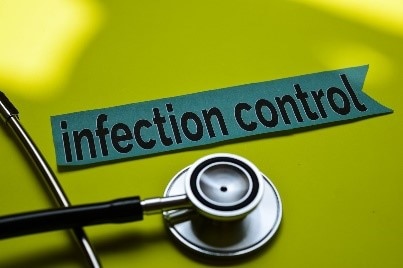Testing in BCG-Vaccinated Persons
Many people born outside of the United States have been given a vaccine called BCG.
People who were previously vaccinated with BCG may receive a TB skin test to test for TB infection. Vaccination with BCG may cause a false positive reaction to a TB skin test.
A positive reaction to a TB skin test may be due to the BCG vaccine itself or due to infection with TB bacteria.
TB blood tests (IGRAs), unlike the TB skin test, are not affected by prior BCG vaccination and are not expected to give a false-positive result in people who have received BCG.
Can latent TB cause damage?
The bacteria are still in your body, but they are not causing damage. However, latent TB bacteria can 'wake up' and become active in the future, making you ill. This can happen many years after you first breathe in TB bacteria.
What causes latent TB to become active?
TB bacteria become active if the immune system can't stop them from growing. When TB bacteria are active (multiplying in your body), this is called TB disease. People with TB disease are sick. They may also be able to spread the bacteria to people they spend time with every day.
TB blood tests are the preferred method of TB testing for people who have received the BCG vaccine.
Why does BCG vaccine cause false-positive TB test?
Background: Bacille Calmette-Guérin (BCG) vaccination is known to cause false-positive tuberculin skin test (TST) results from cross-reactions with mycobacterial antigens. However, the duration of BCG vaccination influence on the TST is poorly characterized.
Information from the baseline individual TB risk assessment should be used to interpret the results of a TB blood test or TB skin test given upon hire (i.e., preplacement). Health care personnel with a positive TB test result should receive a symptom evaluation and a chest x-ray to rule out TB disease. Additional workup may be needed based on those results.
Health care personnel with a documented history of a prior positive TB test should receive a baseline individual TB risk assessment and TB symptom screen upon hire (i.e., preplacement).
A repeat TB test (e.g., TB blood test or a TB skin test) is not required.
Annual TB testing of health care personnel is not recommended unless there is a known exposure or ongoing transmission at a healthcare facility.
Health care personnel with untreated latent TB infection should receive an annual TB symptom screen. Symptoms for TB disease include any of the following: a cough lasting longer than three weeks, unexplained weight loss, night sweats or a fever, and loss of appetite.
Can TB QuantiFERON be false-positive?
We agree that policies governing screening for latent tuberculosis infection in low-risk populations need to be reexamined and changed. The central finding of our longitudinal study is that false-positive QuantiFERON-TB results predominantly occurred in different individuals in each of the 7 years of the study (1).
If you were vaccinated with BCG, you may test “positive” on a TB skin test.
This may be due to BCG vaccine, OR to a real TB infection.
The TB skin test cannot tell the difference.
A positive skin test, even in a person who has been vaccinated with BCG, usually means latent TB infection.
Treatment of latent TB infection is essential to controlling TB in the United States because it substantially reduces the risk that latent TB infection will progress to TB disease.
Can tuberculosis vaccine give's positive TB test?
Yes you can! The BCG vaccine, or Bacille Calmette Guerin, is routinely given in many countries to protect against TB disease.
Although there is a chance the BCG vaccine may cause a false-positive TB skin test, this is not likely if you received the vaccine more than 10 years ago.A
How can I tell if I had BCG vaccine?
Our BCG Scar Check Service involves a nurse taking a vaccination history and physically checking the arm for a scar to see whether that person has received the BCG vaccination.
How long does BCG vaccine stay in your system?
The BCG vaccine can take 3 months to provide protection against TB disease. BCG vaccine should ideally be given 3 months prior to travel to a high TB incidence country. The vaccine loses its effectiveness over time, usually within 5 to 15 years.
How long does BCG stay in your system?
Because BCG is a live vaccine, there are some important safety measures to keep in mind that your doctor can explain. BCG can remain in urine for 6 hours after your treatment, so each time you urinate, you should bleach the toilet in your home to neutralize the vaccine.
What causes latent TB to become active?
TB bacteria become active if the immune system can't stop them from growing. When TB bacteria are active (multiplying in your body), this is called TB disease. People with TB disease are sick. They may also be able to spread the bacteria to people they spend time with every day.
Treatment options recommended for LTBI include: 6-month daily isoniazid, or 9 month daily isoniazid, or 3 month weekly rifapentine plus isoniazid, or 3–4 month daily isoniazid plus rifampicin, or 3–4 month daily rifampicin alone. (Strong recommendation, moderate to high quality of evidence.)

